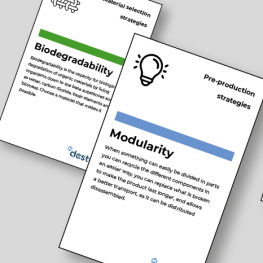This OER wants to provide a methodology to put into practice a design process that has a result a sustainable and innovative result into the application of an advanced textile in a product.
When designing products, it’s important to follow a well-organized design process that allows to consider aspects that involve the user, the market, production, functionality and also the impact that this product has.
When applying advanced textiles this design process can become even more complex, because these innovative materials tend to have a more complex structure that can provoke a higher environmental impact. These materials are in general much younger, so there are less examples that tell us how to work with them, and they have properties that are much more unknown than the traditional materials ones. These facts make necessary to follow a structure that allows experimentation, without forgetting that the result needs to be a competitive product that fulfills the needs of the user and the market.
This structure is divided in four different stages similar to the ones expressed in the Design Council’s Double Diamond (1). In this case, instead of their “discover, define, develop and deliver” we propose “analyze, propose, conceptualize and rationalize”, in order to adapt them better to the particularities of the advanced textile application.
Keywords: Product design, advanced textiles, sustainability, innovation, design process.







